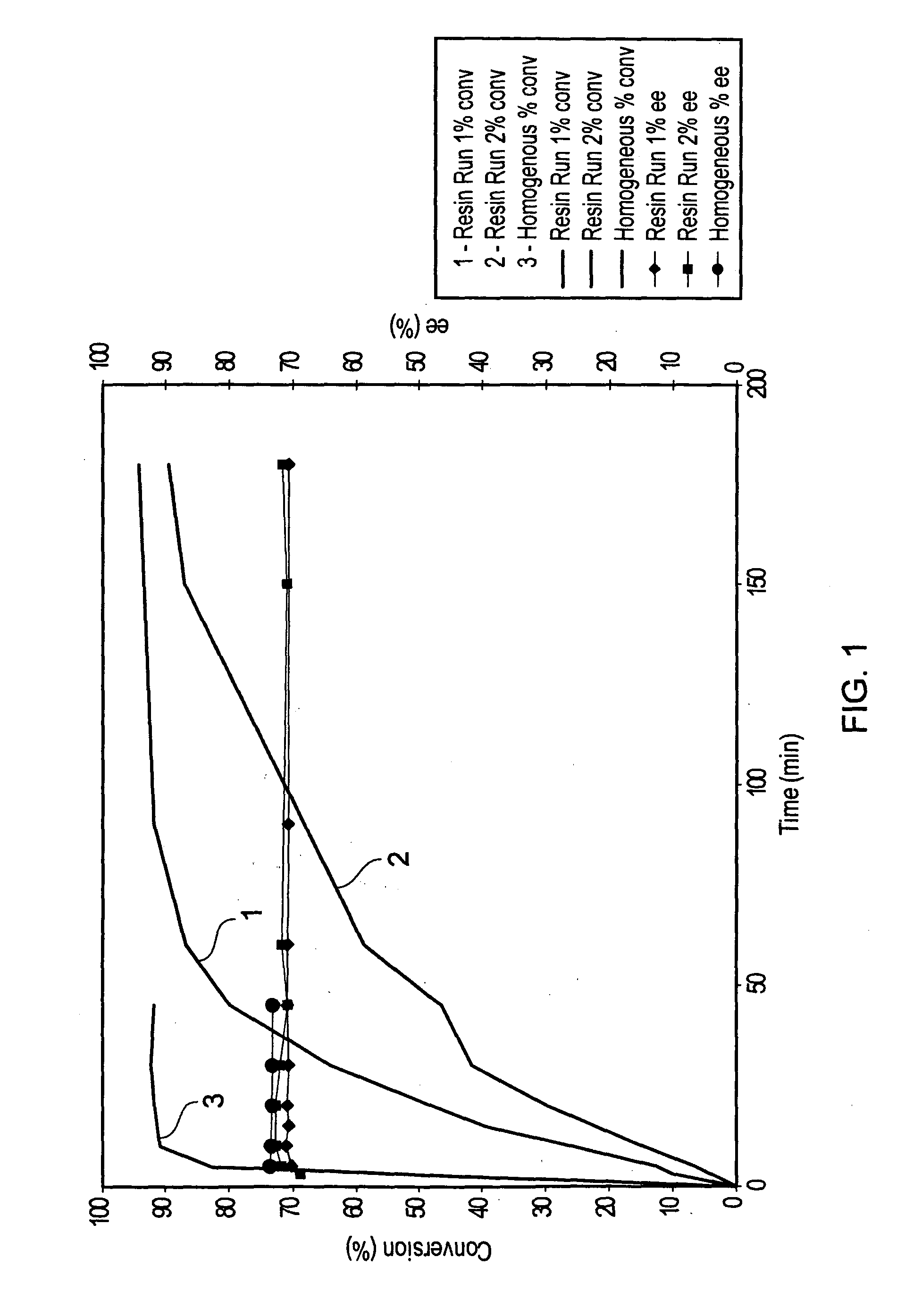Compounds for use as ligands
- Summary
- Abstract
- Description
- Claims
- Application Information
AI Technical Summary
Benefits of technology
Problems solved by technology
Method used
Image
Examples
example 1
1-(5-Hydroxypentyl)-tetramethylcyclopentadiene (Cp*C5OH)
[0051]
[0052]An oven dried three-necked 100 ml round bottom flask with reflux condenser and dropping funnel attached was placed under a nitrogen atmosphere then charged with anhydrous diethyl ether (15 ml). Lithium wire (0.90 g, 130 mmol, 3.2 mm diameter, 0.5-1% sodium) was washed with hexane, cut into small pieces and added to the reaction flask. 2-bromo-2-butene (6.9 ml, 67.5 mmol, mixture of cis and trans isomers) was placed in the dropping funnel and a small portion added to the vigorously stirred lithium suspension. Once reaction had initiated, evidenced by refluxing of the solvent, the remaining 2-bromo-2-butene was diluted with diethyl ether (20 ml) and added at a rate to maintain a gentle reflux. After complete addition, the reaction mixture was stirred for 1 h at r.t. Caprolactone (3.3 ml, 31.2 mmol) in diethyl ether (10 ml) was then added dropwise. After stirring for a further 30 min, the reaction mixture was poured in...
example 2
1-(5-Hydroxypentyl)-tetramethylcyclopentadiene (Cp*C5OH), by Grignard Formation
[0053]
[0054]An oven dried three-necked 50 ml round bottom flask with reflux condenser and dropping funnel attached was placed under a nitrogen atmosphere then charged with anhydrous THF (5 ml), magnesium turnings (0.59 g, 24.3 mmol) an one pellet of iodine. 2-Bromo-2-butene (2.3 ml, 22.5 mmol, mixture of cis and trans isomers) was placed in the dropping funnel and a small portion added to the vigorously stirred metal suspension. Once reaction had initiated, evidenced by loss of the iodine colour and refluxing of the solvent, the remaining 2-bromo-2-butene was diluted with THF (10 ml) and added gradually. A cloudy grey solution formed. After complete addition, the reaction mixture was stirred for 1 h at r.t. Caprolactone (1.1 ml, 10.4 mmol) in THF (5 ml) was then added dropwise. After stirring for a further 30 min, the now yellow reaction mixture was quenched by the addition of 20% AcOH aq (10 ml). The org...
example 3
1-(5-Hydroxypentyl)-tetramethylcyclopentadienyl Dichloro Rhodium (III) Dimer [RhCp*C5OHCl2]2
[0055]
[0056]1-(5-Hydroxypentyl)-tetramethylcyclopentadiene (0.40 g, 1.92 mmol) was dissolved in MeOH (4 ml) in a Radleys carousel tube and the solution degassed with nitrogen. Rhodium trchloride hydrate (0.252 g, 0.96 mmol) was added and the reaction mixture heated under nitrogen at reflux for 24 h. After removal of the solvent on a rotary evaporator the red powdery residue was dissolved in a minimum of DCM and product precipitated with heptane and collected by filtration. Repetition of this precipitation process followed by vacuum drying at 40° C. gave product as fine red crystals (0.340 g, 93%). HPLC Retention time 2.8 min; 1H NMR (300 MHz, CDCl3) 3.63 (t, J=6.3 Hz, 2H, CH2OH), 2.28 (m, 2H, CH2), 1.64 (s, 6H, 2×CH3), 1.62 (s, 6H, 2×CH3), 1.57 (m, 2H, CH2), 1.41 (m, 4H, 2×CH2).
PUM
 Login to View More
Login to View More Abstract
Description
Claims
Application Information
 Login to View More
Login to View More - R&D
- Intellectual Property
- Life Sciences
- Materials
- Tech Scout
- Unparalleled Data Quality
- Higher Quality Content
- 60% Fewer Hallucinations
Browse by: Latest US Patents, China's latest patents, Technical Efficacy Thesaurus, Application Domain, Technology Topic, Popular Technical Reports.
© 2025 PatSnap. All rights reserved.Legal|Privacy policy|Modern Slavery Act Transparency Statement|Sitemap|About US| Contact US: help@patsnap.com



